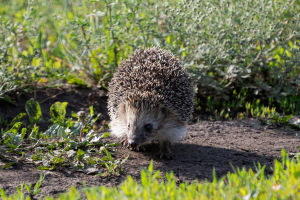Have you ever wondered how some creatures seem to live forever? One of the most fascinating examples is the giant tortoise.
These incredible animals, particularly those found on isolated islands like the Galápagos, have lifespans that often exceed 100 years, with some living well over 150 years.
We all know that tortoises are slow, but their ability to outlive most other species, including humans, makes us curious about their secret to longevity. In this article, we'll explore the unique physiological and ecological traits that allow these tortoises to live for centuries, and we'll also discuss their remarkable metabolism, which plays a big role in their extended lifespan.
1. A Unique Metabolism: The Key to Longevity
We know that metabolism is critical to how an organism ages. While humans and many animals burn through their energy reserves quickly, giant tortoises have an entirely different approach to energy use. Their metabolism is exceptionally slow, which allows them to conserve energy and avoid the rapid wear and tear seen in more metabolically active species.
This slow metabolism not only helps them maintain physical functions over long periods but also reduces the accumulation of cellular damage that typically leads to aging.
Scientists believe that their low metabolic rate, combined with a lack of predators and limited environmental stress, contributes to the tortoise's long lifespan. This slow pace gives their bodies ample time to repair any minor damage to cells or tissues, ensuring that they maintain function much longer than faster-metabolizing creatures.
2. How Their Size and Diet Contribute to Their Long Lives
Giant tortoises are known for their size, and it's not just for show. Their large, sturdy bodies allow them to survive in environments that would be harsh for smaller animals. Their massive size also means they have a much slower heart rate and can go for long periods without food or water. In fact, giant tortoises can live for months without eating—thanks to their ability to store large amounts of water and lipids within their bodies.
As for their diet, giant tortoises are herbivores, typically consuming grasses, leaves, and fruits. Their slow digestive systems allow them to extract maximum nutrients from their food, which further supports their long life. The fact that they don't require much food or water also means that they have fewer opportunities to ingest harmful substances, which might shorten the lifespan of other animals.
3. Island Isolation: A Lack of Predators and Natural Stress
One of the reasons giant tortoises can live for such long periods is their lack of natural predators, especially on isolated islands where they evolve. On the Galápagos Islands, for example, the giant tortoises thrived without the constant threat of predators. This isolation allows them to live in peace, without the wear-and-tear stress that comes from always being on alert.
Without the constant need to flee or fight, the tortoises' bodies experience far less physical strain. This contributes significantly to their longevity since many species, especially those with shorter lifespans, experience accelerated aging due to continuous stress.
4. Slow Reproduction, But Consistent Growth
Giant tortoises are not fast reproducers. They lay only a small number of eggs at a time, and it takes many years for them to reach reproductive maturity. This slow approach to reproduction may seem counterintuitive when thinking about longevity, but it helps maintain a stable, sustainable population. Their method of reproduction allows them to invest deeply in each offspring, giving them the best chance of survival.
As they age, tortoises also continue growing, albeit slowly. Their growth rate does not stop after reaching maturity, and their shell's strength and structure improve with age. This continued growth, combined with the protection their shells provide, helps them survive in their environments longer.
5. Genetic Factors: The Mystery Behind Their Longevity
While we understand some aspects of their long life, the exact genetic factors behind their longevity remain a mystery. Studies have shown that giant tortoises have lower levels of oxidative stress compared to other species, which suggests that their genetics may play a significant role in reducing cellular damage over time.
Additionally, tortoises possess extraordinary DNA repair mechanisms, which allow them to recover from damage more efficiently than many other animals.
Researchers are currently studying the DNA of giant tortoises in hopes of uncovering more about their genetic secrets. If these discoveries can be applied to humans, they might provide insights into slowing down the aging process and extending our own lifespans.
Conclusion: Lessons From the Giant Tortoise
The giant tortoise's ability to live for over a century is nothing short of remarkable. From its slow metabolism to its isolated environment, the tortoise has evolved strategies that allow it to avoid many of the environmental stresses that shorten the lifespan of other animals.
Though we may never live as long as these ancient creatures, we can still learn valuable lessons from their lifestyle: slowing down, conserving energy, and protecting ourselves from unnecessary stress are key elements in promoting a longer, healthier life.
Next time you see a tortoise, remember—there's more to this slow-moving creature than meets the eye. What do you think about the incredible longevity of these creatures? Feel free to share your thoughts in the comments below!


